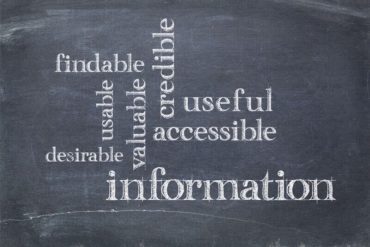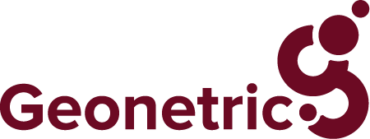Many of the common complaints employees have with their intranets are multifaceted – difficult navigation, outdated or duplicate documents and forms, inaccessible from some devices (like their phones) – but most of them can be addressed with effective content strategy.
What is content strategy? We like this definition from content strategy pioneer Kristina Halvorson: “Content strategy guides your plans for the creation, delivery, and governance of content.” It’s a way, she says, to make smart, informed decisions about content.
Content Strategy is Key to Your Intranet’s Success
Maybe you didn’t develop a formal content strategy when you launched your intranet. Or maybe you did, but after years of use, it’s time for an update.
In the 3rd edition of their Intranet Usability Guidelines, Nielsen Norman Group estimates that the average annual cost to businesses for performing internal tasks on an intranet with poor usability is $13.4 million. And moving from an intranet with bad user experience to “average” can save organizations upwards of $4 million.
Here are 4 ways content strategy can take your intranet from drab to fab.
#1 – Use Surveys to Create Better User Experience
When it comes to intranets, it can be tricky to get the data you need to support the best user experience (UX) possible. That’s where user research comes in!
User Surveys
By creating a survey and sending it out to your employees, you can find out firsthand what is working and what needs improvement on your intranet.
At Geonetric, we’ve facilitated and collected data from hundreds of employees using surveys. One of the most interesting ways to present the data from these surveys can be a word cloud from the results. Word clouds display a cluster of the most common words used across answers, with the most used displayed larger and more prominently.

Card Sorting
Card sorting helps your team think through groups of content types, which can help you organize your intranet. This is another exercise that helps you learn and best use the verbiage that your employees understand and make the organization of your intranet make sense to your users.
Analytics
Reviewing the data you have at your fingertips is essential to understand how your employees use your intranet. Looking at things like popular pages, search terms, and time spent on certain pages gives insight into your user experience on the intranet.
Usability Testing
Test your theories on what will help your users with usability testing. This gives you an opportunity to test and then iterate on the updates you’re planning to make. The results will help either confirm that your changes will be effective or, they may tell you to make adjustments so that your updates are even more helpful!
Identifying Pain Points
Often you find common threads of what your users are looking for on the intranet and what their pain points are. This information can be helpful as you (or your content strategists) outlines what should be prioritized when you address the content strategy of your intranet.
Data like this can help create a user-centered intranet, tailored to the unique needs and culture of your organization, and one that creates a more intuitive tool to help your employees, teams, and leaders do their jobs more efficiently.
Stay Informed About Experience After You Make Changes
Ongoing surveys – even temperature checks, pulse surveys, etc. – are tracked to better employee engagement. Gallup notes a 21% increase in profitability for an organization when employees are engaged. So consider using your new, friendlier intranet to stay in touch with what your employees want and need, both on the intranet and more broadly. This is also a helpful way to make sure that the changes you’ve made are effective and quickly find future opportunities for improvement.
#2 – Create a User-Friendly Navigation & Information Architecture
The hard work that goes into research will be helpful in more ways than one. For example, it can also help you make your intranet more intuitive to navigate.
How? Well, the insight from employee responses to the survey and card sorting will show you the words they use to refer to things like documents, departments, and policies. These tools are crucial for employees, so make them easy to find by using familiar language. That also means fewer frustration points and feelings of “I can’t ever find what I want!” for your users. Instead, you can boost productivity, creating a better experience for your employees.
A Powell Software study found that 50% of employees are design-focused – but often times users will refer to elements of content strategy as design! Therefore, if your intranet is not intuitive or easy to use in its “design,” less than half of its users will find it useful or return to it on a regular basis. So, there’s a real benefit to making sure your intranet plans and provides for your users’ individual needs and wants.
A large part of that benefit is that your content strategy will help you determine top task and needs of your users. Then, on the new site, you can create easy-to-follow paths to the information and tools that your employees and colleagues need on a daily basis.
Sometimes, it pays to have an agency come in to help you prioritize this, because they’re not engrossed in internal politics for your organizations. An outside content strategist, for example, brings industry knowledge and insights based on the research they do about your organizations. And they’ll help you honestly re-evaluate your intranet’s architecture and make sure you’re providing a user-friendly navigation and experience throughout.
#3 – Functionality is Key
Content strategy can help you understand how to use your CMS’s features to their full potential. That means less work for your team and a better experience for your users.
For example, if your documents and essential files are stored in a tool that sorts them alphabetically, you may find this structure and functionality makes it easier for employees to find what they need. An effective site search for your intranet is also a valuable tool that prevents frustration and enables employees to complete their goals.
Your intranet doesn’t have to envelop each and every tool or app your employees use. In fact, it shouldn’t. However, it should be your cohesive, neatly packaged front door to give employees news, events, and access to the everyday tools they use to do their jobs.
#4 – Content Governance to Keep Files Relevant and Up-to-Date
A solid content governance plan is crucial to keeping your intranet useable and relevant.
Content governance is a “discipline that focuses on establishing clear accountability for digital strategy, policy, and standards.”
The great thing about content governance is that it gives you the framework and the tools to help you keep your website – or intranet – up-to-date. With content governance, you’re set up to:
- Facilitate conversations about team roles and responsibilities help teams work more efficiently and effectively
- Document workflows for content updates and document standards (like core content strategy statements and style guides) to support consistency and efficiency
- Create tools to assist with planned content updates (e.g., a content maintenance calendar) and unplanned content updates (e.g., a request form)
Your content strategist can help you create an approach that includes a core group of super users to make this task a little easier to manage. That group can also work to establish a workflow, outlining who reviews documents and who approves them so that everyone is on the same page and everything stays up to date.
The Time to Start is Now
When it comes to your intranet, it’s never been more crucial to have it in working order. It’s an important part of communicating with your staff during a public health crisis like COVID-19.
If tackling your intranet seems daunting, especially with changing priorities due to the pandemic, a partner could be key in getting the project up and running. Contact Geonetric to get the help you need to ensure your intranet is the effective tool it can and should be.









